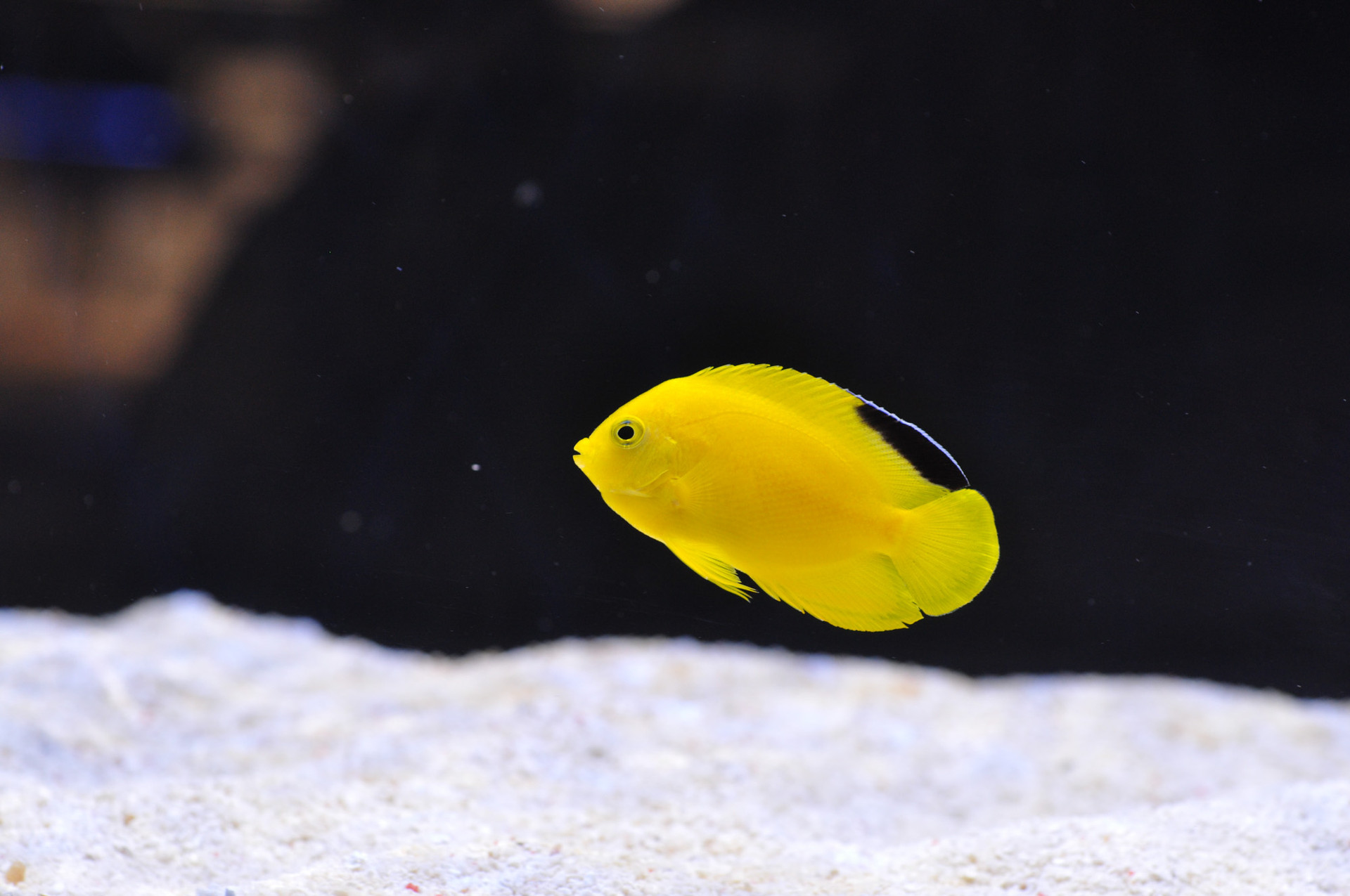Look-A-Likes - Yellow Angels vs Yellow & Black Angels

Yellow Angels (below) and Yellow & Black Angels (above) are both popular hardy aquarium fish. While they are both yellow, they are very easy to distinguish by the black dorsal fin on the Yellow & Black Angel. So why are they are part of this series? Well, some research about these species will land you in a quagmire of information.
If you do a quick internet search for Centropyge woodheadi, you'll quickly find that www.fishbase.org doesn't have a listing for this fish. Why? It is considered by most to be a regional color aberration of Centropyge heraldi. Which leads us to the same old question, are these two the same fish?
Actually maybe, maybe not. To our knowledge, genetic testing hasn't been done to confirm that these are actually two separate species. They have ranges that overlap, but they have a very distinct visual appearance. While some literature suggests they are two species, they are most likely a single species.
Yellow & Black Angels (C. woodheadi)
The Yellow and Black Angel is a fairly common dwarf angel in the Coral Sea; it is frequently seen on the Great Barrier Reef, the Solomon Islands, Fiji, Tonga and the Philippines. It was classified as Centropyge woodheadi when it was originally discovered. While some literature still utilizes this name, most now call this fish the Black Saddled Form of the Yellow Angel. In fact, according to Michael, some fish have been seen to lose this black finned coloration over time, and his book has some excellent photos in regard to this.
Other than range, and the black saddle these two fish have pretty much everything else in common. However, here at QM, we still utilize the Centropyge woodheadi in the scientific name to help eliminate confusion when ordering fish. If you are interested in ordering this fish, all of them come from Short Supply Chains, and it is also a fish that we offer MAC certification specimens.

Yellow Angels (C. heraldi)
Yellow Angels can be found all over the tropical Pacific Ocean at depths ranging from 15 feet all they way down to 180 feet and maybe deeper. They are generally reef associated and have a very small max size (generally under 4 inches) which is one of numbers the reasons they are popular aquarium fish.
Like all the other studied dwarf angelfish, Yellow Angels are Haremic, where one male will frequently guard from two to four females, in an area that he fiercely defends from other male Centropyge. In the harem there is a size based dominance; the male will be the largest, the most dominant female the next largest and so on down the line. Other than size, there are some visual differences between the males and females, but they will be slight. Any time a male is removed, the dominant female will begin transformation into a male, a process that can take less than one month. Males will develop a dark patch behind the eye and will generally have slightly more angular tips to the dorsal and anal fins. (The fish pictured below has the mentioned dark patch, it is very slight.
This makes an excellent aquarium fish, they are robust, grow slowly and generally take a wide variety of foods here in house. Very occasionally they need to be coerced into taking food by offering live foods or OVA. They will do best in aquariums with a lot of live rock both for algal growth for the fish to graze on, and for the multiple hiding places that detailed rockwork provides.
References
www.fishbase.org/centropyge-heraldi
www.fishbase.org/no-centropyge-woodheadi
Gerald R Allen & Roger Steene & Mark Allen, Angelfishes & Butterflyfishes, 1st ed. (Odyssey Publishing 1998)
Scott W. Michael, Angelfishes & Butterflyfishes, 1st ed. (T.F.H. Publications 2004)
Rudie H Kuiter & Helmut Debelius, World Atlas of Marine Fishes, 1st ed. (IKAN-Unterwasserarchiv 2006)
QM Internal Sources: Adam Mangino, Eli Fleishauer